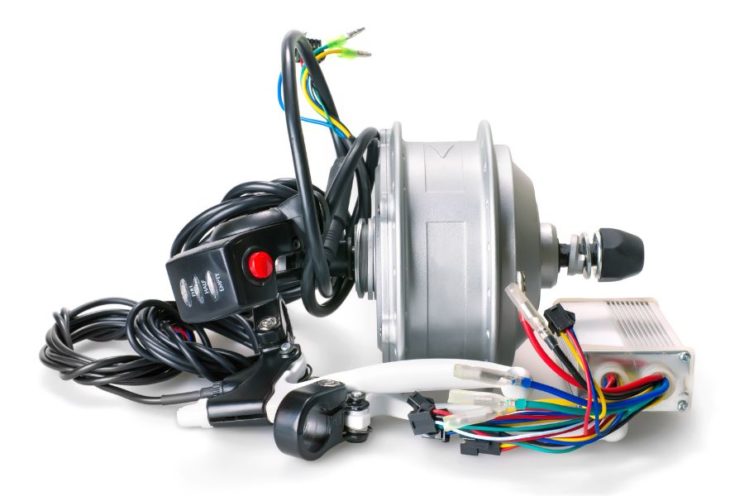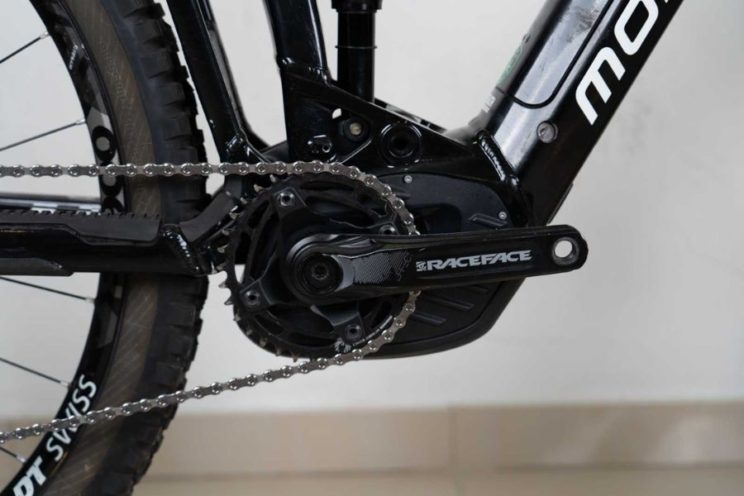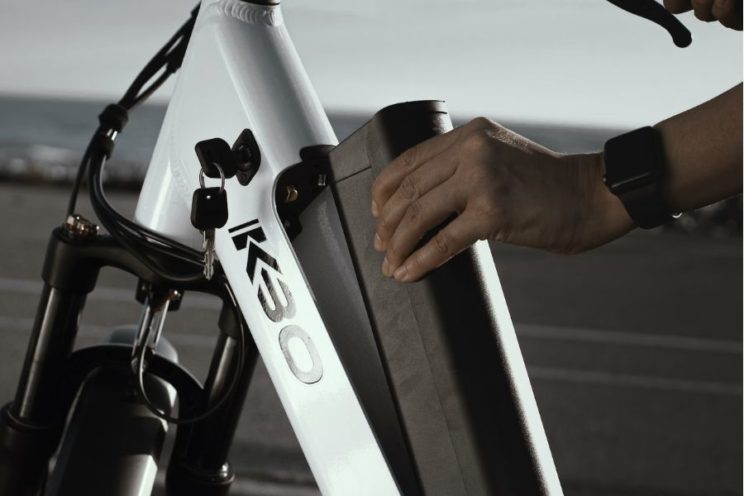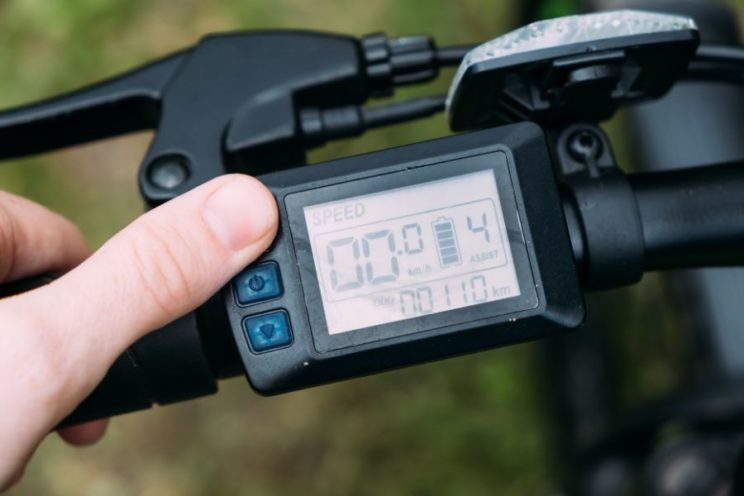If you are thinking of buying a
electric bicycle Or, simply, you want to understand its operation, what comes next interests you ... and a lot.
We are going to break this type of bicycles to know them better. Now that this segment lives its particular golden age, it is a good time to clarify some issues. Let's go there.
In essence, an electric bicycle is the same as a conventional bike. The difference is that it has the support of some components that allow you to go further, or faster, or both the time.
[IRP Posts = "6873" Name = "When should I buy a road electric bicycle?"]
[IRP Posts = "6814" name = "Purchase guide: How to choose a mountain electric bicycle"]
When talking about electric bikes, we need to refer to bicycles with
pedaling assistance. That is, the engine is activated only if we put pressure on the pedals. If so, we would already enter the field of motorcycles.
Do we exercise when we ride an electric bicycle? Of course! The advantage is that we have help to suffer a little less. This assistance reaches, by law,
Up to 25 km/h. At least, in Spain and in the EU countries. From that point, pedaling assistance disappears (or, at least, it should be).
What are the essential components of an electric bicycle? Basically, five:
The engine, battery, sensors, controller and display. We will explain each of them.

The engine of an electric bike
The engine of an electric bike can be located in different rooms of the painting and conditions the behavior of your machine to some extent, with its benefits and its inconveniences. The engine can ride the three places:
- On the front wheel.
- On the back bushing.
- On the pedalier axis, in the center of the bike.
Let's see what each location has
The front wheel engine It is usually the most affordable in price. But this is relative. We see it a lot in folding urban bikes, Brompton type and others, which do not have much economic. But to what interests us: they provide plenty of power to move through the city with joy and occupy little space. On the other hand, it is necessary to control your thrust in slippery terrain. You already know that losing control over the front wheel means an almost safe fall.
Something similar can be said of
rear bushing engines. It is usually a bit more expensive. They transmit the power to the transmission more directly than the front bushing. In addition, due to its location, it makes the bike feel more manageable. The risk that the front wheel is lower is lower, which has an impact on our safety.
In general, bushing engines are ideal for intensive use, since their mechanism is relatively simple and maintenance is not expensive. They are the ideal solution for urban mobility, for example, although its installation in other bicycles is also frequent.
Finally, we can have a
Central motor bike, which is located on the pedalier axis. It is the one that offers the greatest performance, also influencing greater autonomy with respect to other engines.
It is also the one that provides the most stability. The low center of gravity and the weights on the bicycle are distributed perfectly. It is the engine that we find by standard on high performance bikes, the same on the mountain as on the road. In short, it is the engine that allows a more natural pedaling because it responds instantly to the rod movement.

Certain inconveniences must also be taken into account. They are the most expensive engines; In part, because they condition the general design of the bicycle. In addition, they are heavier than bushing engines, occupy more space and consume more energy. On the other hand, the tensions they cause usually affect the pieces of bicycle transmission (chain and pine nuts, especially).
[IRP Posts = "7576" Name = "Light e-bikes vs. standard: what MTB electric buy?"]
In all cases, the engine mission is to absorb the energy provided by the battery to transform it into power that our pedaling attends.
The maximum torque or torque
If we talk about the engine of an electric bike, it is forced to refer to a very important concept:
The torque or maximum torque. Without going into details, it is the acceleration with which it comes out
shot Your electric bike Let's say it would represent the force that the foot exerts on the pedal. Its unit of measure is the Newton per meter (NM).
Normally, this value ranges between 50 and 120 Nm, being higher in the case of mountain bikes for intensive use. The need to overcome obstacles and great slopes conditions these numbers.
Unlike what happens with power, current regulations do not give limits to the torque. Of course: you must keep in mind that a highly high pair will have a decisively impact on battery life. For this reason, you must be clear about the land you will circulate with your bicycle so as not to waste either energy or extra money in your purchase.
The battery of an electric bike
The battery choice is crucial, because it affects the weight, autonomy and performance of our electric bike. It can have different locations, depending on the size and type of frame. The trend is that the batteries are increasingly compact and that they integrate better into the global bicycle design. Let us recognize that a battery, by itself, is a little aesthetic component.
[IRP posts = "8105" name = "tips for your e-bike to take you even further"]
Power and speed On an electric bike depends on motor watts (W).
The capacity, on the other hand, it is expressed in watts per hour (WH) and is the result of multiplying the system voltage by battery amps.
Complicated? To understand this relationship, let's give an example.
In Spain, by law, the power of the engine of an electric bike is limited to 250W. Imagine that we have a battery with a capacity of 500 Wh. This means that it could contribute energy to maximum power for two hours (2 x 250Wh = 500Wh). You can find all these values in the technical specifications of each battery.
In theory, the greater the energy capacity of a battery, the greater its
autonomy. More km you can travel without recharging it. But what was said, only in theory.
[Captation id = "Attachment_8535" Align = "Alignnone" Width = "744"]

Image: Unspash.[/caption]
The autonomy of a battery also depends on many other factors. Of the force of the wind, of the temperature, of the accidents of the terrain, of the joint cycling-bicycle weight, of our form of pedaling, of the level of demand that we ask the battery, of the pressure of the tires ...
The sensors of an electric bike
The pedaling sensors of an electric bike are very important. They condition the engine response and, with it, the way in which we perceive the behavior of our bicycle; The sensations when pedaling, say.
The sensors are devices that detect our pedaling, both in force and in cadence. Do you want to know how they work? We explain it to you in a simple way.
When pedaling, the sensors send a signal to the engine. But they do not do it directly, but through a controller. A kind of
guard That filters the signal so that the engine does not suffer from the account. Received the signal, the engine responds with the necessary power to attend our pedaling.
Finally, we talk about two elements closely linked to each other, such as the controller and the display.
The controller and display of an electric bike
Not because they are the last, they are less important. On the contrary. The controller is not appreciated with the naked eye. Let's say you are inserted in the
guts of the electrical mechanism of the bicycle. However, it is the electronic brain that controls our e-bike. The controller manages and interprets the orders and signs that we send before he sends them directly to the engine. Thanks to the controller, we receive pedaling assistance according to our demand in real time.

A good part of these orders are managed through another fundamental component of our electric bicycle: the display. This is the screen with a screen that is located in the bike handlebar.
Through the display, it is possible to easily control issues such as speed, distance or battery charge. In addition, it allows to program the level of assistance to our pedaling and easily change from one level to another.
How many levels of pedaling assistance exist?
Basically, and depending on the models, they are usually four:
1.- The level of assistance 0. The engine is disconnected and the bike becomes a bike
conventional. Of course, a heavy bike. You already know that lightness is not exactly one of the virtues of an e-bike. On the road, the lightest are around 11 kg; For MTB, a weight around 16 kg would really be a
Featherweight.
2.- Low assistance level, better known as Eco mode. It is the ideal to rationalize the use of the battery. To make an idea, it can be between 25% and 80% of additional power with respect to the force that we apply on the pedals, with our own physical capacity, let's say.
3.- Normal assistance level. It can contribute a plus of between 100% and 150% of the power that we apply on the pedals. Consequently, autonomy is significantly reduced with respect to eco mode. Quietly, 50%, but depends on use.
4.- High assistance level. It can mean up to 200% of the force applied by the cyclist. With this level of assistance, there will be no wind that comes to you or costs you to resist, but you will end the load of your battery in less than sing a rooster.
Good. Well now that you know the operation and the elements that distinguish an electric bike, it is time to choose. But first of all, you should ask yourself: What is the use that I am going to give to my bicycle? But that is another story, which we will talk about at another time.

 Certain inconveniences must also be taken into account. They are the most expensive engines; In part, because they condition the general design of the bicycle. In addition, they are heavier than bushing engines, occupy more space and consume more energy. On the other hand, the tensions they cause usually affect the pieces of bicycle transmission (chain and pine nuts, especially).
[IRP Posts = "7576" Name = "Light e-bikes vs. standard: what MTB electric buy?"]
In all cases, the engine mission is to absorb the energy provided by the battery to transform it into power that our pedaling attends.
Certain inconveniences must also be taken into account. They are the most expensive engines; In part, because they condition the general design of the bicycle. In addition, they are heavier than bushing engines, occupy more space and consume more energy. On the other hand, the tensions they cause usually affect the pieces of bicycle transmission (chain and pine nuts, especially).
[IRP Posts = "7576" Name = "Light e-bikes vs. standard: what MTB electric buy?"]
In all cases, the engine mission is to absorb the energy provided by the battery to transform it into power that our pedaling attends.
 Image: Unspash.[/caption]
The autonomy of a battery also depends on many other factors. Of the force of the wind, of the temperature, of the accidents of the terrain, of the joint cycling-bicycle weight, of our form of pedaling, of the level of demand that we ask the battery, of the pressure of the tires ...
Image: Unspash.[/caption]
The autonomy of a battery also depends on many other factors. Of the force of the wind, of the temperature, of the accidents of the terrain, of the joint cycling-bicycle weight, of our form of pedaling, of the level of demand that we ask the battery, of the pressure of the tires ...
 A good part of these orders are managed through another fundamental component of our electric bicycle: the display. This is the screen with a screen that is located in the bike handlebar.
Through the display, it is possible to easily control issues such as speed, distance or battery charge. In addition, it allows to program the level of assistance to our pedaling and easily change from one level to another.
A good part of these orders are managed through another fundamental component of our electric bicycle: the display. This is the screen with a screen that is located in the bike handlebar.
Through the display, it is possible to easily control issues such as speed, distance or battery charge. In addition, it allows to program the level of assistance to our pedaling and easily change from one level to another.












